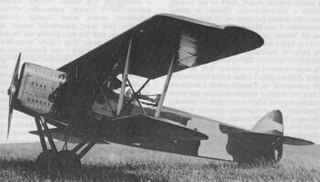
The Aero A.11 was a biplane light bomber and reconnaissance aircraft built in Czechoslovakia between the First and Second World Wars. It formed the basis for many other Czechoslovakian military aircraft of the inter-war period. Around 250 were built, with some remaining in service at the outbreak of World War II.
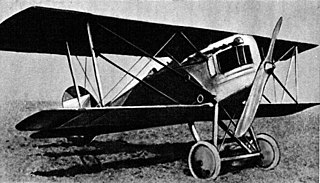
The Aero A.18 was a biplane fighter aircraft built in Czechoslovakia in the 1920s. It was a development of the Ae 02 and Ae 04 fighters Aero had designed during World War I, but also borrowed from the more recent A.11 reconnaissance-bomber design.
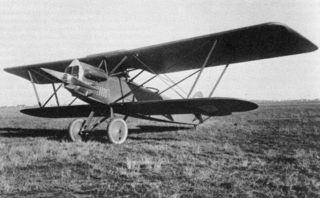
The Aero A.30 was a biplane light bomber and reconnaissance aircraft built in Czechoslovakia in the late 1920s. It originated as an attempt by Aero to improve the performance of the Aero A.11, but soon evolved into quite a different aircraft, larger and more powerful than its predecessor. The aircraft is readily distinguished from other related types by the difference in spans between its wings – the upper set being of much greater span than the lower.

The Aero A.32 was a biplane built in Czechoslovakia in the late 1920s for army co-operation duties including reconnaissance and tactical bombing. While the design took the Aero A.11 as its starting point, the aircraft incorporated significant changes to make it suited for its new low-level role.
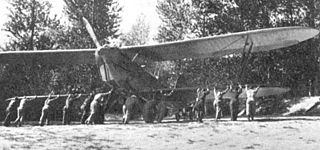
The Aero A.101 was a biplane light bomber and reconnaissance aircraft built in Czechoslovakia during the 1930s.

The Aero L-60 Brigadýr was a small, high-wing propeller-driven Czechoslovakian STOL utility aircraft developed for both civil and military use. A prototype, designated XL-60, with Argus As 10C engine, first flew on December 24, 1953, but it was not successful. The plane was thoroughly redesigned and the second improved prototype, with M-208B flat-six engine, flew on June 8, 1954. The aircraft's configuration bears a strong resemblance to the Fieseler Fi 156 "Storch" licence-produced in Czechoslovakia during and after World War II, and which this aircraft was intended to replace. By the end of production in 1960, 273 had been built by Aero, including an improved version, the L-160 with an all-metal tail.

The WZ.X was the Polish reconnaissance aircraft designed in the mid-1920s and manufactured in the Centralne Warsztaty Lotnicze (CWL) - Central Aviation Workshops in Warsaw. It was the first combat aircraft of own design built in Poland, in a small series.

The Avia BH-26 was a two-seat armed reconnaissance aircraft built in Czechoslovakia in 1927. It was a single-bay unstaggered biplane with equal-span wings and a fixed tailskid undercarriage. Both upper and lower wings featured long-span ailerons, which were dynamically balanced by a small auxiliary airfoil mounted to the upper surface of the lower ailerons. Its design was typical of this type of aircraft built during World War I and the years following; pilot and observer sat in tandem open cockpits with the observer armed with a machine gun on a ring mount. As with many other Avia designs, the BH-26 originally had no fixed fin, only a rudder, but this was changed in service.
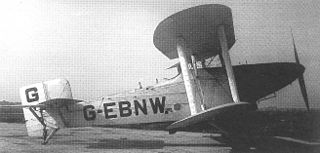
The Avro 571 Buffalo was a prototype British carrier-based torpedo bomber biplane, designed and built by Avro in the 1920s. It was not selected for service, the Blackburn Ripon being ordered instead.

The Avro 604 Antelope was a British light bomber which was designed and built in the late 1920s to meet a requirement for a light bomber to equip the Royal Air Force, competing against the Hawker Hart and the Fairey Fox II. It was unsuccessful, the Hart being preferred.
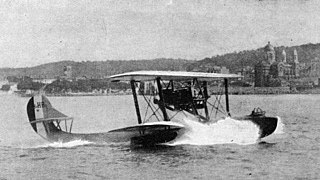
The Blanchard Brd.1 was a French reconnaissance flying boat, to the 1923 STAé HB.3 specification, used by the French navy in the 1920s. It was a large biplane with two engines mounted in the gap between the wings, each engine driving a pusher propeller. In 1924, one Brd.1 was used to set several world altitude records for seaplanes.
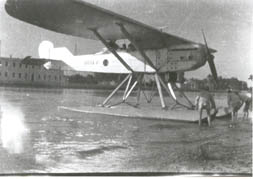
The Breda A.7 was a reconnaissance aircraft developed in Italy for use by the Regia Aeronautica in 1929. It was a braced parasol monoplane of conventional configuration with tailskid undercarriage. The pilot and observer sat in tandem, open cockpits. A single prototype of a long-range example, originally designated A.7 Raid and later A.16 was also constructed, but the air force showed no interest in it.

The Dewoitine D.21 was 1920s French open-cockpit, fixed-undercarriage monoplane fighter aircraft.

The Letov Š-4 was a Czechoslovak single-bay, unstaggered biplane fighter and trainer in the 1920s.

The Lioré et Olivier LeO 20 was a French night-bomber aircraft built by Lioré et Olivier.
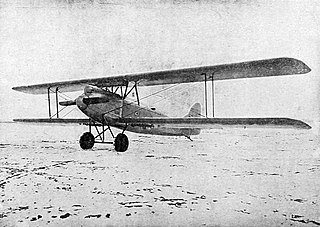
The Letov Š-6 was a bomber aircraft produced in Czechoslovakia during the 1920s. Derived from the Š-2, it was a biplane of conventional design. The wing cellule was an all-new design with a thicker profile, and while it had been intended to build them with a metal structure, wood was used instead due to shortages. Performance during testing was so promising that in 1924 an Š-6 was used to set a new altitude record with a 500 kg payload, and a national endurance record of 10 h 32 min.
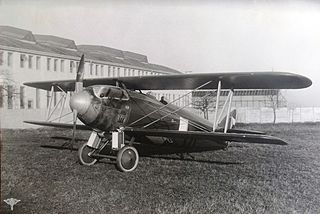
The Letov Š-20 was a fighter aircraft produced in Czechoslovakia during the 1920s.

The Levasseur PL.5 was a carrier-based fighter produced in France in the late 1920s, in response to the 1924 AMBC.2 specification issued by the Service Technique de l'Aéronautique (STAé). It was a conventional, single-bay sesquiplane that carried a crew of two in tandem, open cockpits. Like other Levasseur naval designs of the day, it incorporated several safety features in case of ditching at sea. Apart from small floats attached directly to the undersides of the lower wing, the main units of the fixed, tail-skid undercarriage could be jettisoned in flight, and the underside of the fuselage was given a boat-like shape and made watertight.

The Levasseur PL.6 C.2, also known as Levasseur VI C.2, was a two-seat fighter aircraft built in France in 1926 in order to meet a 1925 C.2 Service Technique de l'Aéronautique (STAé) specification,. Constructed along the same lines as Levasseur's naval aircraft of the same era, it was a conventional, single-bay biplane with seating for the pilot and tail gunner in separate, open cockpits. Flight testing of the prototype commenced in 1926, and it was exhibited at the Salon de l'Aéronautique at the end of the year.

The Wibault 12 Sirocco or Wib 12 Sirocco was a two-seat, parasol wing fighter aircraft designed and built in France in the 1920s. Three fighter prototypes were completed, one for the RAF and two Army co-operation variants. There was no series production.




















